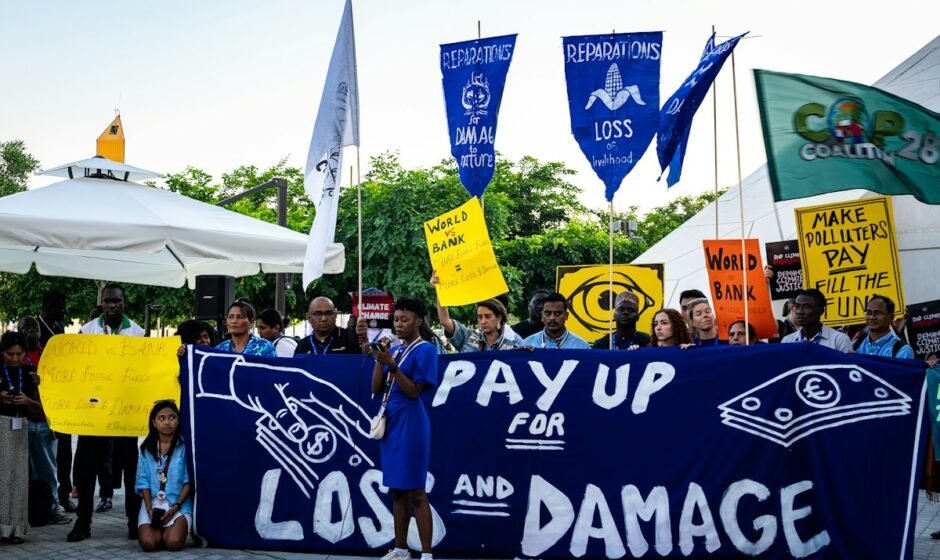Developing economies faced with managing their debts in 2023 are expected to face even greater challenges this year. While these economies may not be insolvent and have relatively small debt stocks, they are in urgent need of liquidity. This not only makes it difficult for them to manage their debts but also hampers their ability to invest in the green transition.
In recent years, developing economies have been hit by a series of external shocks, including the Covid-19 pandemic, disruptions in food and energy supply chains due to conflicts, and a rise in global inflation. Additionally, their access to capital markets has been limited, preventing them from rolling over maturing loans as they would normally do. As a result, countries have had to allocate a significant portion of their tax and export revenues to debt service, sacrificing investments in infrastructure, social welfare programs, and climate action.
The outlook for these countries is expected to worsen in the coming years. According to estimates by the Finance for Development Lab (FDL), at least 20 low- and lower-middle-income countries will face large debt payments in 2024 and 2026. As they hit this “debt wall,” their already fragile fiscal positions will deteriorate further, posing a challenge for climate action.
Climate change is not a distant threat but is already having global impacts, particularly in climate-vulnerable developing economies. However, international summits on climate change held last year delivered disappointing outcomes. While developed economies pledged to increase climate financing by 2030, policymakers in developing economies are struggling due to severe fiscal constraints. This has led to frustration among developing and emerging economies, as expressed at the Summit for a New Global Financing Pact held in Paris in June.
Multilateral development banks (MDBs) can play a crucial role in providing support. However, their capacity needs to be strengthened rapidly. According to World Bank data, the concessional loans received by the world’s poorest countries from MDBs in 2022 were smaller than their debt service payments, a significant portion of which went to private and bilateral creditors. The increasing capital flight from the developing world, driven in part by monetary tightening in advanced economies, will further exacerbate the needs of low-income countries with limited liquidity.
However, it is not just a matter of financial capacity. MDBs have been inconsistent in their support for countries struggling to repay their debts. For example, both Kenya and Ethiopia have come under pressure to repay their private and Chinese creditors, who are now collecting more in debt service payments than they are providing in new loans. Only Kenya has received sufficient support from the International Monetary Fund, the World Bank, and others to refinance its maturing debt this year.
In contrast, assistance to Ethiopia has declined in recent years, resulting in the country defaulting on its external debt, despite it being only 25% of GDP. While the approach taken with Kenya is not a comprehensive solution, providing similar levels of support to all illiquid countries would require a significant increase in MDB flows, which is currently unrealistic.
A better approach would involve bridging the gap between short-term debt concerns and long-term investment needs by unlocking net-positive inflows for countries facing liquidity constraints. The FDL has proposed an agreement among debtors, creditors, and MDBs to allow countries to reschedule their debts coming due, delaying maturities by 5-10 years. This would create fiscal space for climate-friendly investments financed by MDBs.
For this liquidity bridge to be effective, MDBs would need to accelerate progress in implementing existing reform plans and significantly increase funding, while the IMF would help manage debt rollover risks. Importantly, private and bilateral creditors would need to agree to the rescheduling. Compared to the Debt Service Suspension Initiative introduced by the G20 in 2020, the proposed approach includes stronger incentives for private-sector creditors to participate and longer time horizons.
There are compelling reasons to believe that creditors can be convinced to voluntarily join such a program. It is in their best interest to remain invested in solvent countries with strong growth prospects, as no one benefits from debt crises faced by countries like Zambia and Sri Lanka. Furthermore, creditors would continue to receive interest payments, and as global interest rates fall and economic growth prospects improve in the coming years, debtors may be able to return to capital markets and resume repayment of the principal.
Creating a workable blueprint along these lines is a task for upcoming international gatherings, such as the G20 summit in Brazil later this year. Logistical and financial coordination will be necessary to ensure sufficient liquidity. Coordination among the IMF, the World Bank, and regional development banks will also be crucial to ensure that participating debtor countries make investments that genuinely support green growth.
If no action is taken to assist countries facing liquidity crises, the world risks a wave of destabilizing debt defaults, which would severely undermine progress on the green transition, with catastrophic implications for the entire world. Solutions like the liquidity bridge offer promising ways to prevent such outcomes and deserve broad global support.
(Ishac Diwan is Research Director of the Finance for Development Lab. Vera Songwe is a senior fellow at the Brookings Institution and the Finance for Development Lab.)



